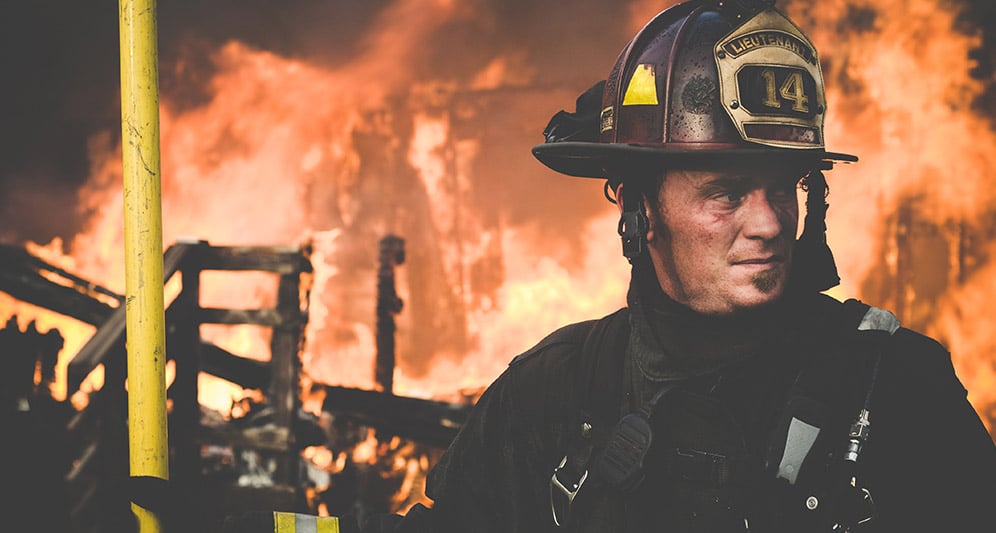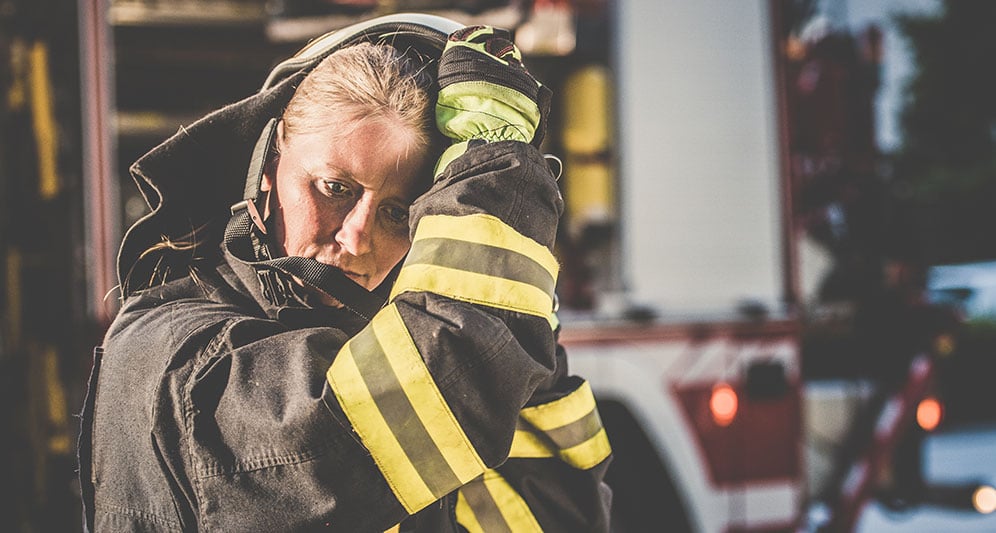Article highlights
Work in the fire service requires a willingness to enter dangerous situations and sacrifice for others. But every firefighter ultimately wants to go home safely at the end of the day.
It’s incredibly important for every fire department to have measures in place for firefighter safety. Firefighters must know how to navigate dangerous incidents, avoid preventable injuries, and protect their fellow firefighters and the people they serve.
There are several aspects of firefighter safety, including health, equipment, training, and more. Firefighting policy is also a crucial aspect of operational safety.
How policies/SOPs/SOGs impact safety
In the fire service, policies are sometimes seen as just a formality. It is true that policies are important for risk management and liability avoidance. But they are worth much more to fire departments and firefighters.
Firefighting policy and standard operating procedures lay the groundwork for fire service safety. By establishing processes and standards, fire department SOGs help firefighters do their jobs safely.
For example, equipment policies may include timelines for regular maintenance. This helps ensure that equipment is functioning properly and is less likely to malfunction at the scene of an emergency.
SOPs also improve firefighter safety in several other ways:
Set clear expectations
Firefighting SOPs help firefighters know how to act and react in day-to-day work and in critical situations.
Policies help firefighters avoid unnecessary risks and injuries by ensuring they are following best practices for safety.
SOPs also help firefighters quickly make critical decisions. For example, if a fellow crew member is unresponsive, everyone will automatically know the procedure to follow to get them to safety. They won’t have to spend time discussing how to respond or weighing options. Instead, they can work together cohesively to address the situation.
Emergency scenes can be confusing and hectic. If crew members rush in with their own approach or go off on their own, they can quickly land in a life-threatening situation.
However, when every firefighter is following the same policies, they are better able to communicate effectively and work efficiently as a team. This improves accountability and helps ensure that everyone goes home safely.
Implement highest standards
Policies and procedures in the fire service should set the standards for operations and firefighter readiness.
Firefighting policy should spell out the performance and physical standards for each member. Making sure firefighters are healthy and physically fit is a proactive way improve firefighter safety. And having standards in writing helps ensure that every staff member is able to do their job effectively.
Department SOPs should also include specific standards for operations. Formal, written standards provide the foundation for operational safety. They also help the department meet accreditation and state standards for operations and firefighter safety.

Foster a culture of safety
Firefighter safety measures are most effective when safety is an ingrained part of the department culture.
Factors such as the department mission statement, policies, leadership, and the behaviors of individual staff members all work together to form a culture of safety in the fire service.
Formal policies and procedures communicate the department culture and emphasize the importance of safety. SOPs provide shared language and expectations leaders and staff can use to talk about safety.
Empower members to address safety issues
With set expectations and a culture of safety in place, every firefighter will be more focused on safety and aware of safety concerns. Firefighter safety is the responsibility of every staff member, and firefighters should feel the freedom to bring up safety issues. Policies should include ways for firefighters to report and address safety concerns.
However, while everyone plays a role in firefighter safety, every department should have a designated fire safety officer. The safety officer works with other department leaders to create and enforce safety measures. The National Fire Protection Association lays out standards for a health and safety officer in their list of codes and standards.
In order to be effective, the safety officer must have the authority to implement safety measures. Policies should give the safety officer the proper authority to monitor risks, take appropriate actions to address safety issues, investigate incidents, and recommend policy changes.
Steps to improve safety through policies
Firefighter policies and procedures must be properly implemented in order to be effective. SOPs should be more than a list of rules stuck in a binder on a shelf. They should be living, changing documents that guide the day-to-day operations of the department.
Here are a few ways to ensure that policies work effectively to improve firefighter safety:
Link your policies and training
Fire department policies and training should go hand in hand.
Including policies in training can help raise awareness of policies they may have forgotten. Training should show firefighters how to practically carry out proper policies and procedures.
A good policy management and training tool such as PowerDMS allows you to cross-reference and link your policies and your training content. This ensures the standards and expectations are drilled into firefighters’ heads so they know how to do their jobs safely.
Hold members accountable to policies
Firefighter SOPs are not just a backup plan or a formality. Department leaders need to ensure that firefighters are following proper procedures to maintain firefighter safety.
This doesn’t mean that the safety officer monitors firefighters’ every move. It may be as simple as the safety officer regularly conducting operational reviews to make sure procedures are effective.
Just like equipment checks, these reviews should happen proactively and not just in the case of an incident. If firefighters aren’t following procedures, they may need a refresher on the proper policies. With a policy management software, department leaders can easily distribute policies for firefighters to read and sign off on. They can even attach quizzes to make sure that every staff member understands the policy.
If firefighters aren’t following procedures, it may also indicate that procedures need to be changed to improve safety.
Health and safety policies
Physical fitness and wellness play significant factors in firefighter safety. Fitness is a key part of operational readiness, ensuring firefighters are physically capable of the tasks they may need to perform.
But health is a long-term concern, as well. Studies have shown that those in the fire service have a higher risk of chronic diseases such as heart attacks and cancer and also behavioral health problems such as PTSD and depression.
As mentioned before, firefighter policy should include specific fitness standards. But policies should also include resources, tools, and recommendations to help members stay healthy in all aspects of their lives.
The firefighter safety organization Everyone Goes Home recommends implementing regular physical examinations, taking steps to create healthy working conditions, and providing physical fitness facilities.
However, health policies should address mental and emotional health as well.
As a report from FEMA points out:
“If left unaddressed, behavioral health issues can have tragic consequences on a firefighter’s personal and professional life. Relationships can be damaged or destroyed, dangerous habits or addictions could form, and the person may act recklessly, which also endangers their fellow responders.”
Part of fostering a culture of safety in the fire service is making sure that firefighters know where to turn for help if they are struggling with any of these issues. Policies can help reduce the stigma around these issues by including resources and information.

Make policies a priority
Again, policies won’t do much for firefighter safety if firefighters never see them. If a policy manual is simply a binder on a shelf that is only used to study for promotional exams, firefighters will see little value in knowing and following SOPs in daily operations.
However, if policies are regularly updated, trained on, and discussed in the department, firefighters will be more likely to see the value of the procedures contained within.
To truly improve firefighter safety, policies and procedures need to be regularly updated. They need to line up with current best practices, new technology, and the changing needs of the department.
A policy management software like PowerDMS makes it easy to collaborate on policy updates and track changes in accreditation standards.
PowerDMS can also help department leaders ensure that firefighters read and understand policies. Commanders can collect signatures on new and updated policies, link policies and training content, and even issue simple tests to make sure firefighters understand SOPs.
Up-to-date, accessible, understandable policies help firefighters know what's expected of them, improving firefighter safety and bringing excellence to all parts of department operations. Learn more about policy and procedure management in the fire service.

